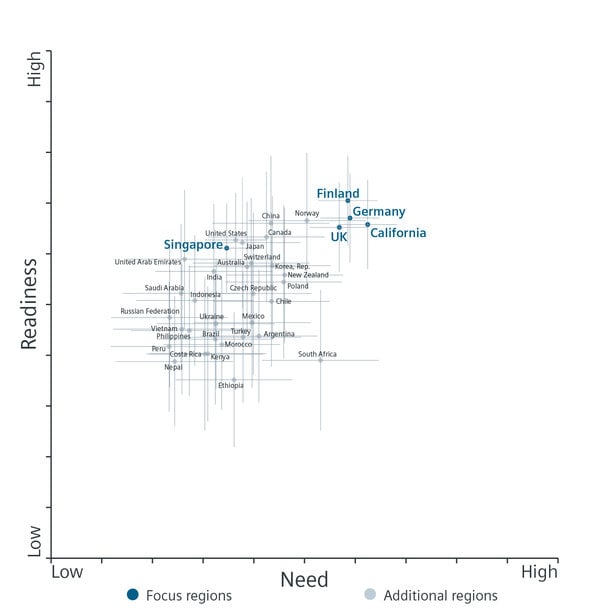International grid edge study reveals countries’ needs and readiness for the energy transition
In the effort to mitigate climate change, global energy markets are changing for good. Energy generation is increasingly relying on renewables, and formerly passive consumers are becoming active prosumers.

- Grid edge estimated to be crucial to tackle the energy transition
- Assessment of grid edge readiness and need for 36 countries worldwide
- Results provide valuable insights for governments and industries alike
For this energy turnaround to succeed, the grid edge – the interface between energy supply and energy demand – is more important than ever. Grid edge technologies are crucial to support the energy transformation. They encompass a wide range of technologies, from electric vehicles to heat pumps, solar panels, and smart meters to apps which allow remote control of appliances.
In a joint research project, Siemens Smart Infrastructure, Technische Universität Berlin (Germany) and University of Oxford (UK) have defined a comprehensive index to assess the opportunities and barriers for grid edge solutions. “There is no one-fits-all blueprint for the energy transformation. Many factors influence which solutions are appropriate for a region, and how ready a country is to deploy them at scale,” says Michael Weinhold, CTO at Siemens Smart Infrastructure.
The three partner organizations analyzed 36 countries worldwide for their grid edge readiness and needs. The results have just been published in a white paper which discloses grid edge scores for each country. “To know the need and readiness for grid edge technologies in a specific geography can be extremely valuable for companies and governments alike,” says Weinhold. “For instance, regulatory frameworks can encourage and even accelerate corporations’ energy transformation activities.”
Focus on five countries
The white paper focuses on Finland, Germany, Singapore, the UK, and California (US). These regions were selected because they have been at the forefront in developing and adopting modern energy technologies in the past. The research found that Finland is the country with the highest readiness, in part due to its plans for a flexibility market and high carbon price, while California has the highest need, in part due to its solar panel penetration. Germany and the UK follow closely behind, while Singapore, although exhibiting high grid edge readiness, presents a lower need, partly due to moderate ambitions for introducing renewables into its future energy mix.
The study analyzes 31 additional countries on every continent, among them nations with huge populations such as China, India, and the Russian Federation, but also less populated countries like Canada, Norway, South Africa and Switzerland.
www.siemens.com

